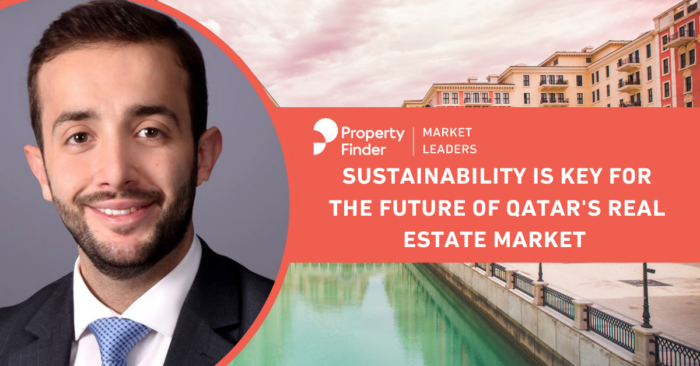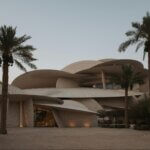
Jawdat Al Kateb
General Manager
Coreo Real Estate
Qatar, known for its fast-paced economic growth, is taking significant strides towards sustainability, evident in the real estate industry. The government and private sector are embracing green building and sustainable practices to reduce the country’s environmental impact. Their commitment to sustainability has increased demand for sustainable buildings, having a positive influence on the real estate market.
The country’s climate, characterized by high temperatures and limited rainfall, makes traditional building methods unsustainable in the long term. Adopting more energy-efficient and environmentally friendly practices is necessary to ensure that buildings can continue providing safe and comfortable living spaces.
As the country looks to the future, it is taking necessary steps to ensure that its buildings are more energy-efficient and have a lower environmental impact. By adopting green building standards, promoting renewable energy, and developing new technologies, Qatar’s real estate market will likely become more sustainable and resilient in years to come.
Sustainability in the real estate industry refers to the design, construction, and operation of buildings in an environmentally responsible way. It involves using renewable energy sources, water conservation, and reducing greenhouse gas emissions. The benefits of sustainable buildings include reduced energy costs, increased indoor air quality, and improved occupant health and productivity.
One organization that significantly promotes sustainable development in the country is the Qatar Green Building Council (QGBC). The QGBC is a non-profit organization established in 2009 to promote sustainable building practices in Qatar and encourage the implementation of green building codes and standards. The organization is a World Green Building Council (WGBC) member and works closely with other green building councils worldwide to promote sustainable building practices.
The QGBC has several initiatives that promote sustainability in the construction industry. One is the Qatar Sustainability Assessment System (QSAS), a green building rating system developed specifically for Qatar. The QSAS provides guidelines and standards for sustainable building design and construction practices and evaluates the sustainability of buildings based on a range of factors, including energy efficiency, water conservation, and indoor environmental quality.
The QGBC organizes several events and workshops to raise awareness of sustainable building practices. These events provide a platform for industry professionals to share their knowledge and experiences and to discuss new developments and trends in the field. The QGBC also includes training and certification programs for professionals in the green building industry. These programs aim to educate professionals about green building practices to help them obtain internationally recognized certifications.
The Leadership in Energy and Environmental Design (LEED) certification is one example of a globally recognised green building standard. Buildings that achieve LEED certification are recognized as being among the most environmentally friendly in the world. Several notable sustainable buildings and developments in Qatar have received the LEED certification that has set the standard for future regional projects.
Here are some of the most prominent examples of sustainable developments in Qatar:
- Qatar National Convention Centre (QNCC): Completed in 2011, the QNCC was the first convention center in the Middle East to receive LEED certification and is considered one of the region’s most sustainable buildings. It features a range of energy-efficient and sustainable design elements, such as solar thermal panels for hot water and heating and a rainwater harvesting system for irrigation.
- The Pearl Island Qatar: An artificial island developed by United Development Company (UDC), is designed as an eco-friendly and sustainable community, with features such as water and energy conservation and using renewable energy sources. The island includes a district cooling system that uses seawater to cool buildings, reducing the need for energy-intensive air conditioning.
- Msheireb Downtown Doha: This sustainable mixed-use urban regeneration project in the heart of Doha incorporates various sustainable design elements, including energy-efficient building envelopes, solar thermal systems, and rainwater harvesting. It also includes a district cooling system that combines groundwater and seawater to cool buildings, reducing the need for energy-intensive air conditioning. Msheireb Downtown Doha has achieved several international certifications, including the LEED Platinum certification, the highest level of accreditation awarded by the US Green Building Council.
- Lusail City: Located in the northern part of Qatar, Lusail City aims to become a model for sustainable urban development, with features such as smart city technology, integrated transportation systems, and a focus on green spaces and public parks. The city is also designed to be pedestrian-friendly, with wide sidewalks, bike lanes, and dedicated pedestrian areas.
- Education City: A 2,500-acre campus that hosts various international universities, research centers, and student housing that aims to reduce its environmental impact through sustainable technologies and practices, such as solar power, rainwater harvesting, and energy-efficient building design.
- Sidra Medicine: A LEED-certified hospital that features energy-efficient systems, water conservation, and the use of sustainable materials, as well as a green roof and solar panels.
- Other developments that achieved LEED Gold certification include Qatar Foundation Headquarters, Hamad International Airport, Al Mourjan Business Lounge, Qatar Faculty of Islamic Studies and Qatar National Library, featuring a range of sustainable design elements, such as energy-efficient lighting and air conditioning systems, rainwater harvesting systems, and green roofs.
These projects are just a few examples of Qatar prioritizing sustainable development and green building practices. The country has recognised the importance of sustainable construction and its impact on the environment, human health, and the economy. By incorporating sustainable features into its real estate projects, Qatar is positioning itself as a leader in sustainable development in the region.
In conclusion, Qatar’s commitment to sustainability and green building practices is evident in the many sustainable real estate projects developed in the country. Integrating sustainable design features into these projects helps reduce their environmental impact, offers economic benefits, and contributes to the local community’s well-being. With the support of organizations like the QGBC, Qatar is well on its way to becoming a regional leader in sustainable real estate development.
About the author:
Jawdat is the General Manager of Coreo Real Estate, a full-service real estate solution advising clients on property matters since 2008. With over nine years of experience in the Qatari market, Jawdat’s expertise at Coreo focuses on sales, customer relations and business management. He quickly rose through the market ranks, having been recognized as ‘Property Consultant/Top Performer of the Year’ before being promoted to Coreo’s GM in early 2020. Jawdat has a Bachelor of Science in Economic and Business Management.
You can also search for:
unfurnished apartment for rent in doha
shop for sale in qatar





